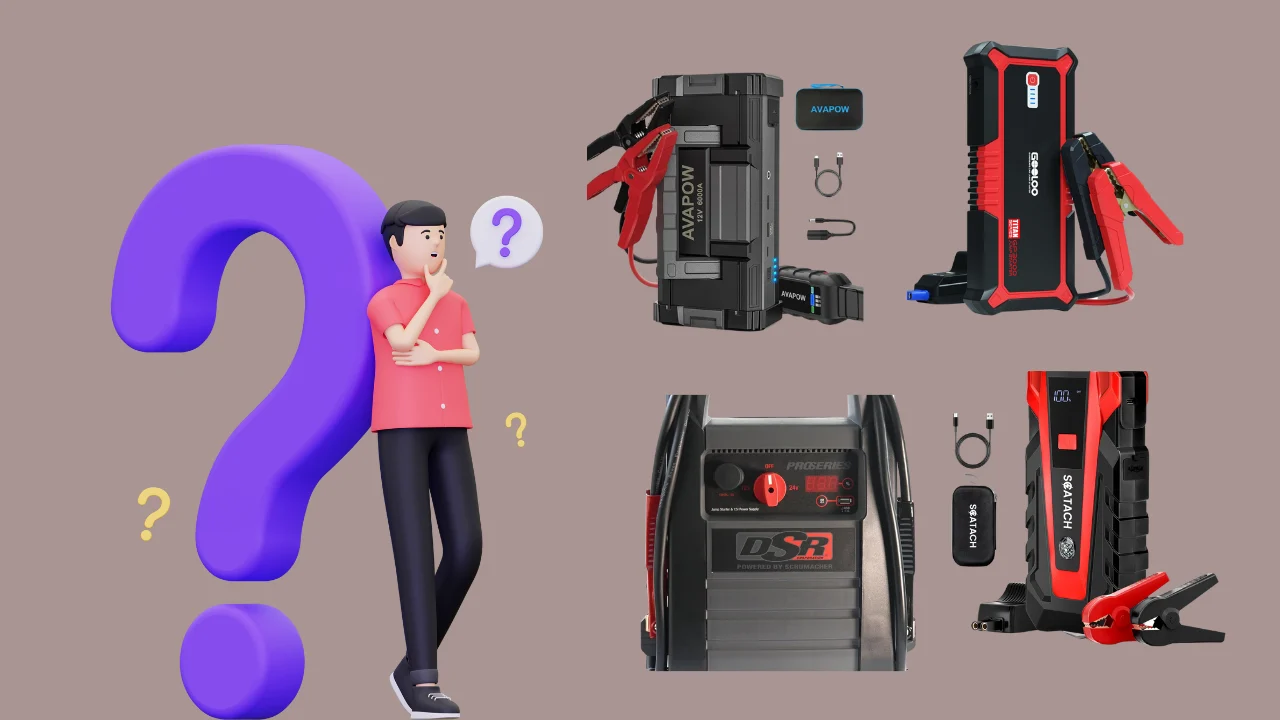You never know when your car battery might die, and that’s where knowing how to use a jump starter saves the day. With 1 in 5 drivers facing dead batteries annually, being prepared ensures you’re never stuck waiting for help. These tools are handy, lightweight (often around 2-5 pounds), and easy to carry anywhere. Need to jump-start an automatic car without cables? Follow our guide on how to jump-start an automatic car without cables for alternative solutions
Using a jump starter only takes 5-10 minutes from set-up to ignition. What makes them even better is you won’t need another vehicle—just connect, jump, and go! Whether you’re on a road trip or commuting to work, a jump starter adds peace of mind to your journey.
How often should I charge my jump starter?
It’s important to keep your jump starter charged to ensure it’s ready when you need it. Here’s a more detailed breakdown:
- Charge it every three months if not in use: Even when idle, the battery can lose charge gradually. Regular charging helps maintain its performance.
- Recharge immediately after each use: After jump-starting a vehicle, the battery inside the jump starter gets drained and needs to be recharged to be ready for the next emergency.
- Store it properly to avoid charge loss: Extreme heat or cold can degrade the battery over time. Keep the device in a cool, dry place to maintain its charge and lifespan.
- Look for battery indicators: Many models include LED indicators or digital screens to show the remaining power level, making it easy to know when recharging is needed.
- Avoid leaving it unused for over six months: Long periods without charging can cause the battery to lose capacity permanently, reducing its effectiveness in emergencies.
If you ride a motorcycle, having the right jump starter is crucial. Discover the best jump starter for motorcycles to keep your bike ready to go.
How To Use A Jump Starter – 4 Easy Steps
Preparing the Jump Starter and Vehicle
Let’s dive into the essentials before you start jump-starting. Getting the setup right will save time and prevent frustration. A few checks beforehand will help you avoid mistakes and ensure things run smoothly when it’s time to start the engine.
Charge the Jump Starter:
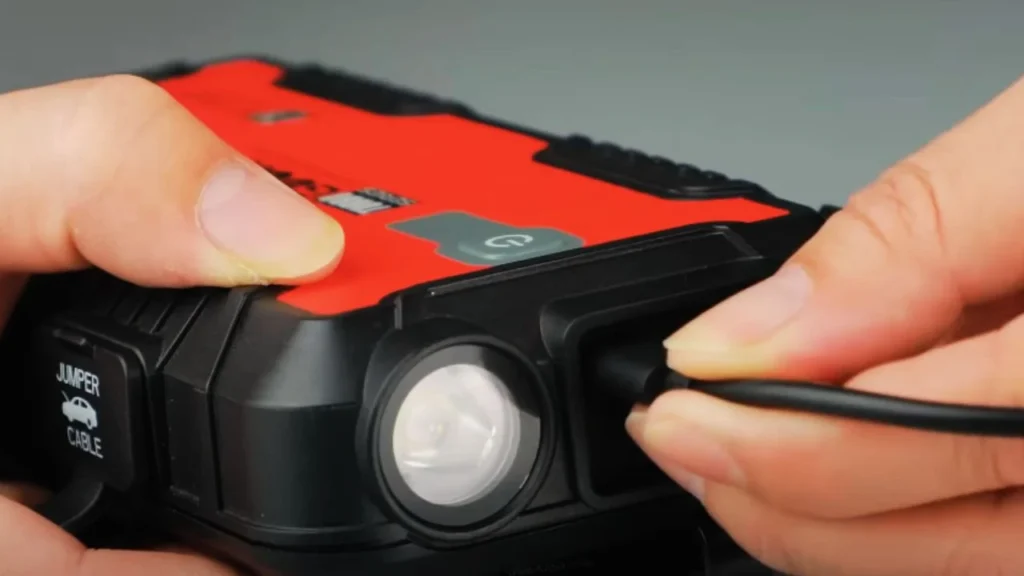
Ensure it’s fully charged—most models require 3 to 12 hours, with some taking up to 24 hours for the first charge. Aim for at least 70% charge to ensure enough power to start your vehicle.
Turn Off Car Accessories:
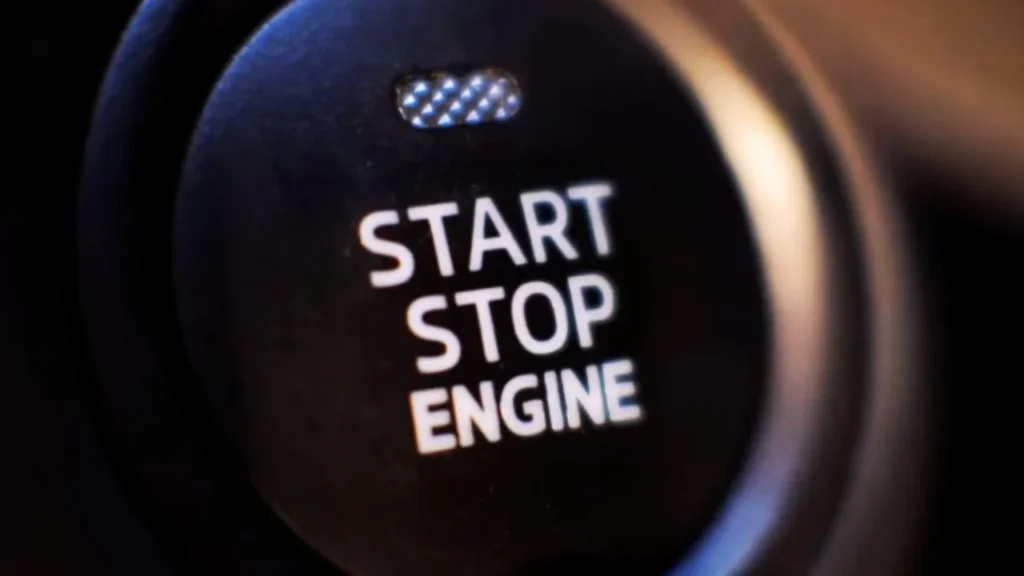
Make sure the ignition, headlights, and radio are all switched off to prevent unnecessary drains. This allows the battery to focus entirely on starting the engine.
Place the Jump Starter Safely:
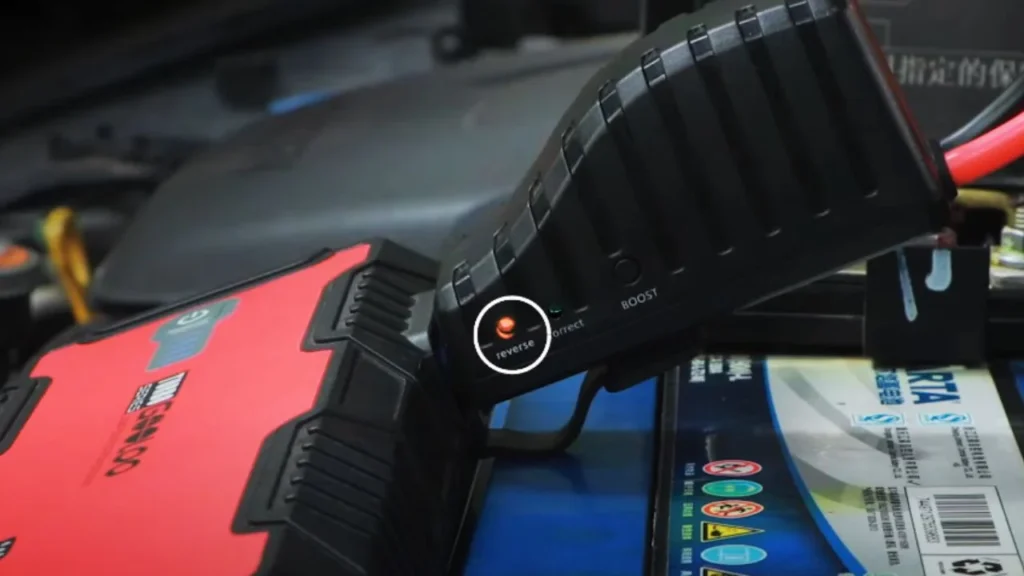
To avoid accidents, set it on a stable, flat surface away from moving engine parts. Ensure the cables reach the battery terminals comfortably without stretching or tangling.
Connecting the Jump Starter to the Battery
First things first, find the positive (+) and negative (-) terminals on your car battery. Most batteries have these symbols clearly marked, but if yours doesn’t, look for the red cable—it’s the positive one. Using the right clamps for the right terminals ensures a safe connection and keeps sparks away.
Now, grab your jump starter and its two clamps—red and black. Follow these steps to connect them properly:
Red Clamp (Positive):
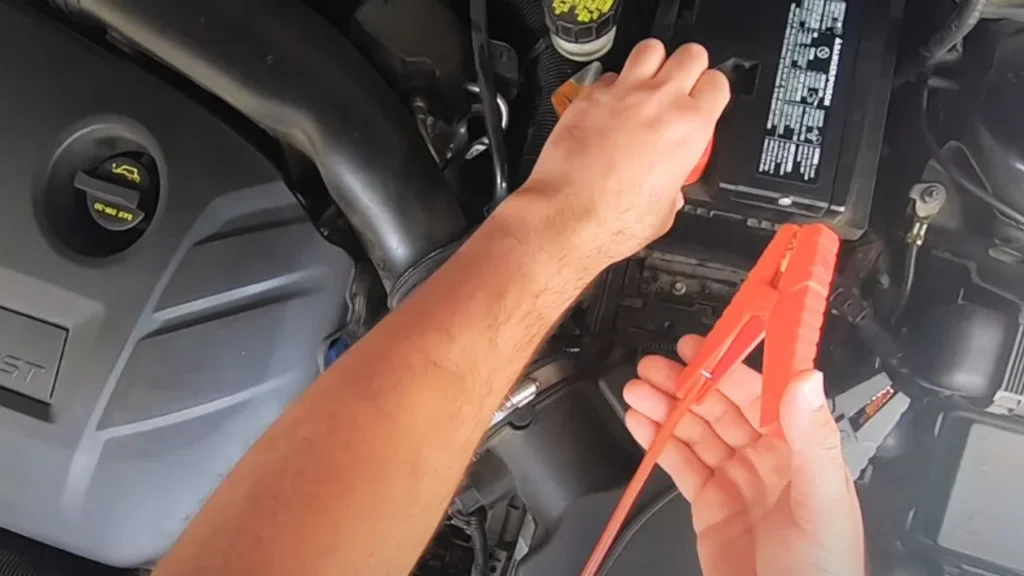
Attach this clamp to the positive terminal marked with “+” or “POS” on the battery. Ensure it sits firmly to avoid any loose connections.
Black Clamp (Negative):
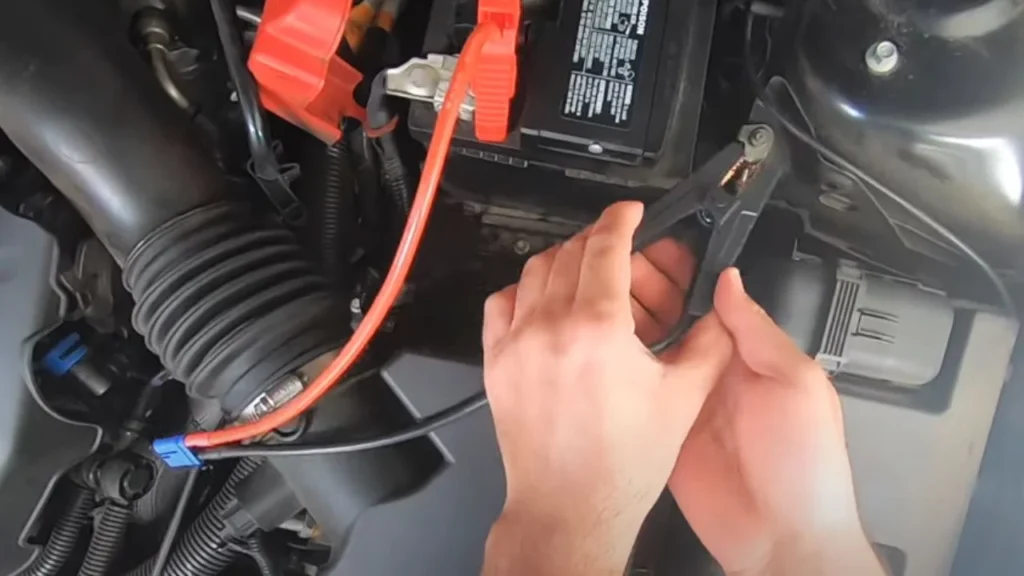
Clip it to an unpainted, solid metal part of the car frame or engine block. Keep it away from the battery and moving parts like fans or belts.
Here’s a pro tip: Make sure the cables are snug and won’t slip off when you crank the engine. The vibrations can loosen poorly attached clamps, so double-check their grip before starting.
Can you jump-start a car without a battery? Find out the possibilities and limitations in our 2024 guide to jump-starting without a battery.
Starting the Vehicle
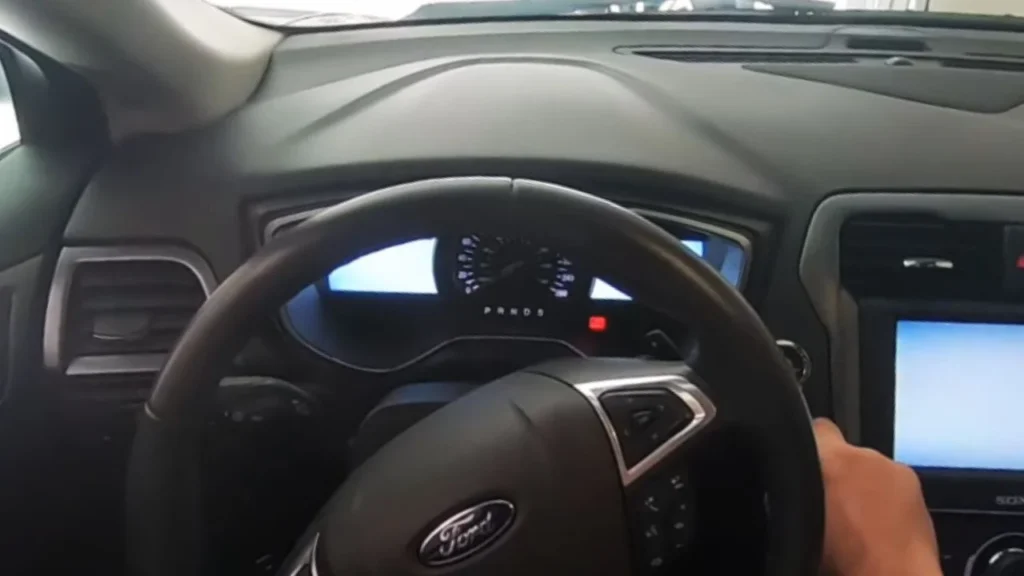
Alright, the moment of truth—time to crank that engine! Turn on the jump starter if it has a power button. Most models will have a small LED indicator showing it’s ready to boost.
Go ahead and try starting the engine now. Don’t hold the key or button for longer than 5 seconds. If it doesn’t fire up right away, take a break for 2-3 minutes to let everything settle.
Still no luck? No worries! Double-check the cable connections and ensure the clamps are tight. Some batteries might need an extra moment to gather enough charge to crank properly.
Disconnecting the Jump Starter

Once the engine roars to life, your job isn’t done just yet. Now it’s time to power down and disconnect the jump starter safely. Turning off the jump starter before removing the clamps is essential to avoid any electrical mishap.
- Step 1: Start by removing the black clamp from the negative terminal or metal ground. Always remove the negative clamp first to avoid accidental sparks that could harm your car’s electronics.
- Step 2: Next, take off the red clamp from the positive terminal. Make sure the clamps don’t touch each other or any metal part of the engine to prevent short circuits.
- Step 3: Store the jump starter in a cool, dry place. Lithium-ion jump starters perform best when kept below 85°F (29°C), so avoid leaving them in hot environments like a car trunk.
- Step 4: If your jump starter has LED indicators, recharge it as soon as possible. Many devices need 3–6 hours of charging to restore full power, but some models might take up to 24 hours.
- Step 5: Keep the jump starter handy in case of future emergencies. Regularly inspect the cables and clamps to ensure they’re free of corrosion or damage.
Post-Jump Steps
Alright, so your engine is finally purring—great job! But don’t hit the road just yet. Let your car idle for around 10 to 15 minutes. This gives your alternator time to charge the battery properly, preventing any surprises down the road.
Once you’re in a safe place, plug your jump starter into an AC outlet. Some units only take 3 to 12 hours to recharge, but bigger ones may need a full 24 hours. Keeping it charged ensures you’re always prepared for the unexpected.
Here are a few things to keep in mind after your jump-start:
- Test Your Battery: If your battery was fully drained, it might be nearing the end of its life. A dead battery has about a 30% chance of future failure, so it’s smart to get it checked.
- Keep Your Jump Starter Ready: Recharge it after every use and store it at around 40% to 80% capacity if not using it for a while. Lithium-ion batteries like this care!
- Check for Corrosion: Pop the hood and inspect the battery terminals. A little cleaning now prevents loose connections and helps your car stay reliable.
If your car struggles to start again later, it’s likely time for a new battery. Car batteries generally last around 3 to 5 years, but a full drain can shorten that lifespan. Better to swap it out now than risk getting stranded again!
Common Problems and How to Fix Them
Even with the best tools and preparation, things can go wrong when using a jump starter. But don’t worry—most issues are easy to fix if you know what to look for. In fact, a large portion of jump-starting failures are caused by things like poor connections, low battery charge, or environmental factors.
Is Your Jump Starter Fully Charged?
Let’s start with the basics—check if the jump starter is fully powered. Most units need 3 to 6 hours to recharge, but if it’s deeply drained, it could take up to 24 hours. Keep an eye on the battery indicator to avoid surprises when you need it the most.
Are the Connections Secure?
Loose clamps are sneaky culprits. Did you know over 20% of failed starts are because of poor connections? Make sure the red clamp is on the positive terminal and the black clamp is secured on a grounded, unpainted metal part of the car.
Dealing with Corrosion on Terminals?
Corroded terminals are easy to overlook, but they can ruin your jump-start attempt. Grab a wire brush and spend 5 minutes scrubbing them clean. A small amount of cleaning can save you a lot of frustration down the road.
Is the Temperature Too Low?
Cold weather can mess with your jump starter. Lithium-ion batteries tend to struggle at temperatures below 32°F (0°C). If the device feels cold, warm it up indoors for a bit before trying again—it makes a huge difference.
When to Consider a New Battery?
If your car won’t start after 4 or 5 tries, it’s time to rethink the battery’s health. Roughly 10% of batteries fail completely after being deeply discharged too often. A replacement might be the solution to prevent more headaches.
Looking for a powerful, versatile tool? Explore the best battery charger and jump-starter combo options available on the market.
Final Words
Now that you know how to use a jump starter, you’re ready for the unexpected. Trust me, nothing beats the feeling of getting back on the road in 10 minutes instead of waiting hours for help. Just remember—most jump starters need about 3 hours to recharge fully after use, so keep them powered up.
I’ve had my fair share of dead batteries, but with this tool, it’s easy to stay in control. It’s all about being prepared, safe, and quick on your feet!
Wondering if a car with a bad alternator can be jump-started? Check out what you need to know in our article on jump-starting a car with a bad alternator.
